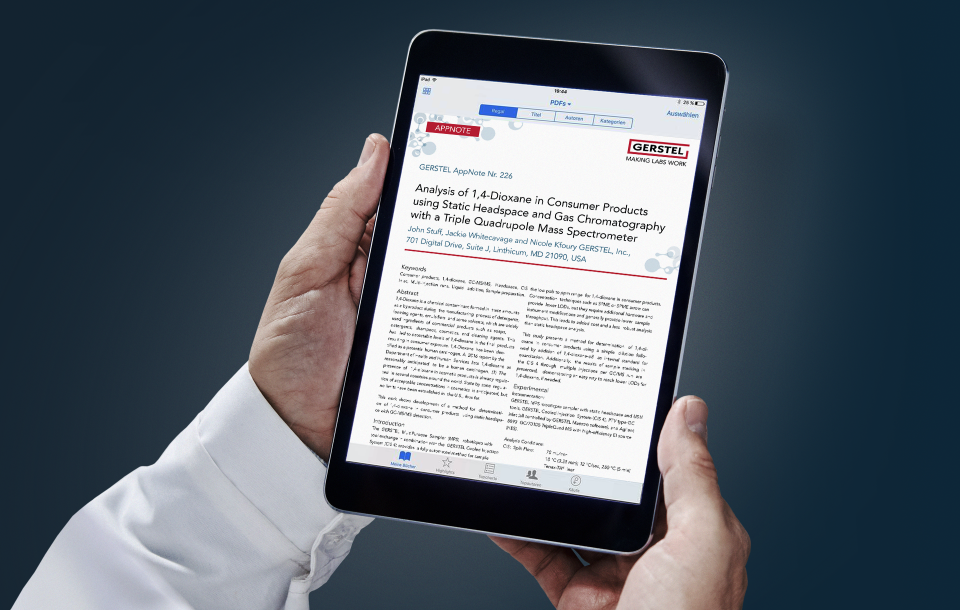Gas Chromatography-Olfactometry (GC-O) is an essential technique in aroma analysis. Olfactory detection is often performed in parallel with GC detection, for example, using a mass spectrometer. To ensure that an Olfactory Detection Port (ODP) is installed properly and is in good working condition, a performance checkout procedure is required. An ODP checkout standard has therefore been developed and its application is discussed in this document.
Static headspace analysis is often considered to be useful only when the analytes of interest are present in high concentrations. Although techniques like solid phase microextraction (SPME) and dynamic headspace (DHS) have better extraction effi ciencies, due to advances in mass spectrometry design, VOCs can now be detected in the parts per billion range using static headspace. Static headspace is routinely used for blood alcohol determination and for the analysis of residual solvents in pharmaceuticals. Method development is fast and simple, usually with little to no sample preparation.
In this study, Thin Film Solid Phase Micro-Extraction (TF-SPME) devices with carboxen/polydimethylsiloxane (CAR/PDMS), divinylbenzene/polydimethylsiloxane (DVB/PDMS), and hydrophilic lipophilic balanced/polydimethylsiloxane (HLB/PDMS) coatings are investigated for their usefulness for beverage analysis in combination with Stir Bar Sorptive Extraction (SBSE) using the GERSTEL Twister®. A variety of beverages are analyzed including almond milk, black tea, strawberry banana juice, amber lager, and pumpkin ale. The GERSTEL MPS is used in combination with a CIS 4 inlet and thermal desorber for automated thermal desorption of the TF-SPME devices.
In this study, Thin Film Solid Phase Microextraction (TF-SPME) with a divinylbenzene/polydimethylsiloxane coating (DVB/PDMS) was used to extract off-odor compounds from paper product samples. The use of gas chromatography-mass spectrometry directly coupled with olfactory detection (GC-MS/O) enabled simultaneous detection of off-odor regions of the chromatogram and mass spectral identification of off-odor compounds. Identification of off-odor compounds in consumer goods is crucial for the manufacturer in order to identify the cause, take corrective action, and thereby maintain brand acceptance and success.
Synthetic cathinones (also known as Bath Salts) are a group of drug compounds designated as Novel Psychoactive Substances (NPS). They are unregulated, mind-altering substances with no actual approved medicinal use. Since they are cheap substitutes for other stimulants like methamphetamine and cocaine, users will unfortunately turn to these addictive and in some cases even more dangerous alternatives to achieve the desired euphoric effects.
There is a critical need for forensic, health care, and law enforcement scientists to be able to quickly assess and monitor which synthetic cathinone is involved, in order to effectively respond to cases involving these compounds.
Pagination
- Previous page
- Page 7
- Next page
